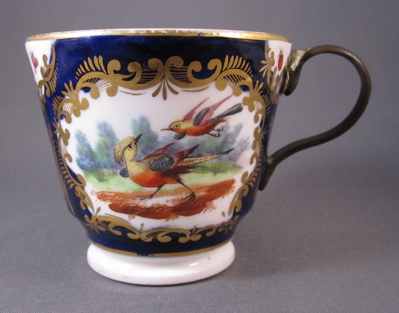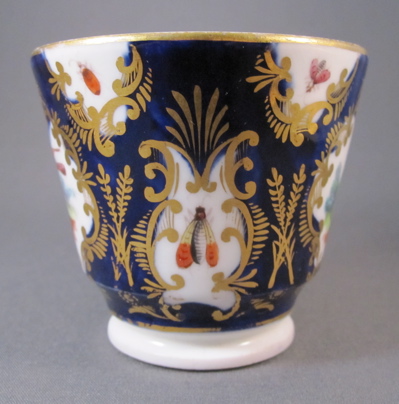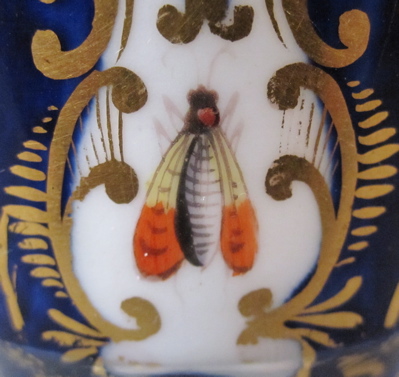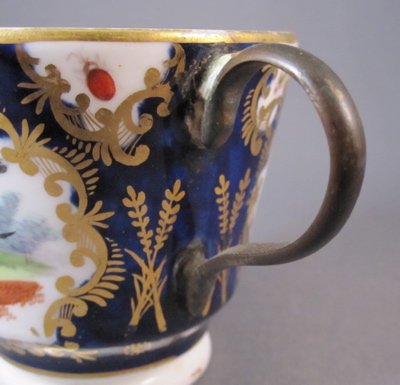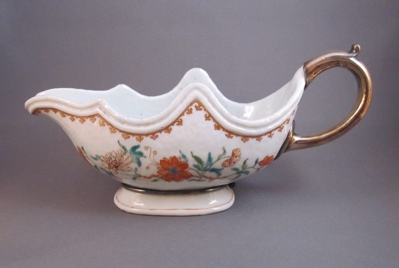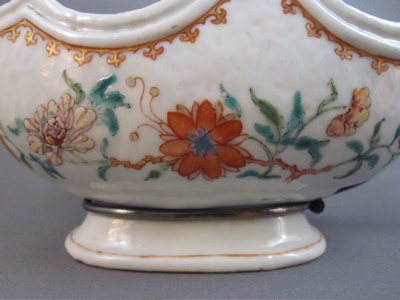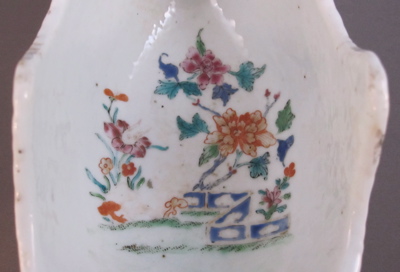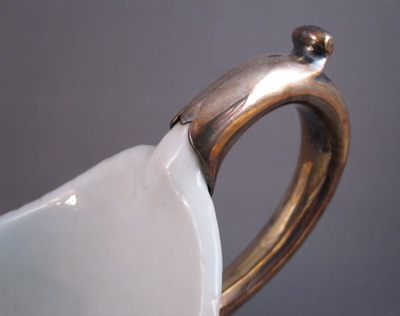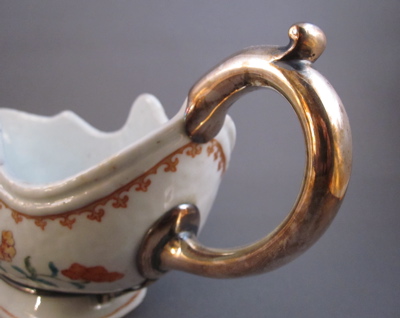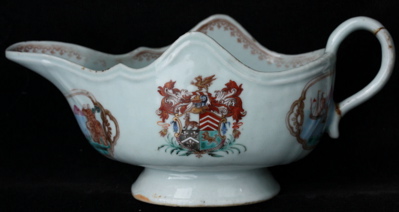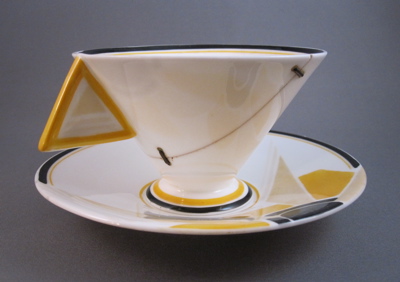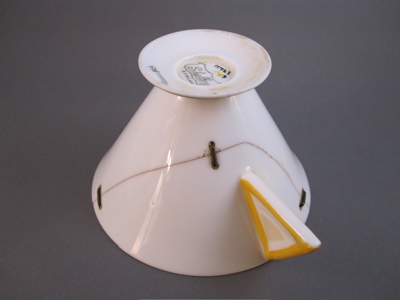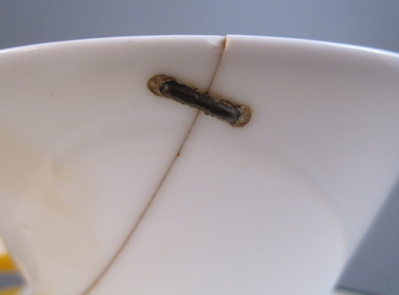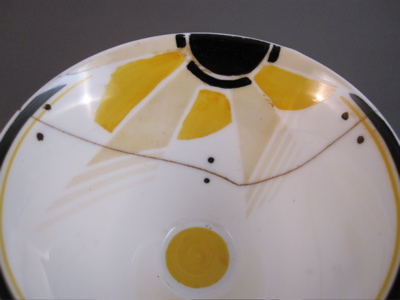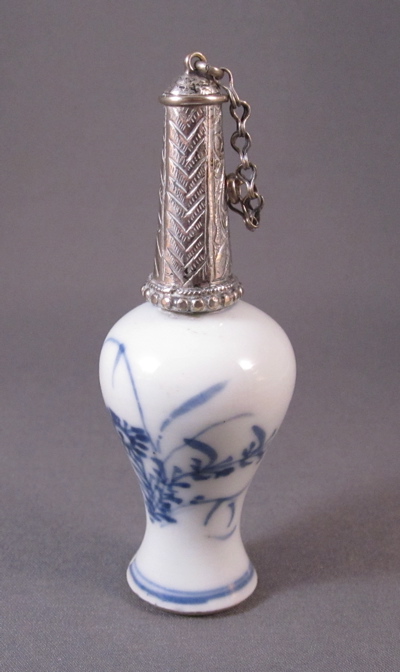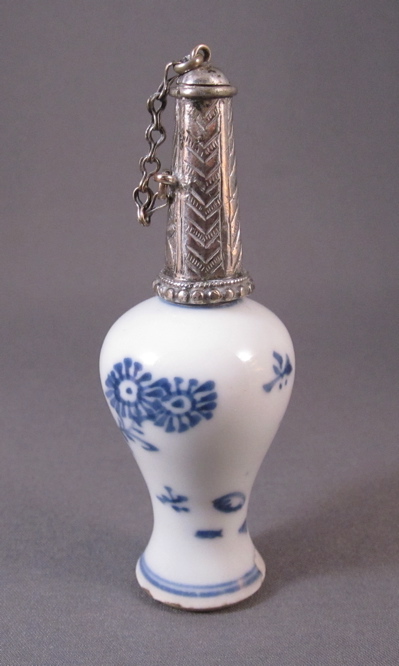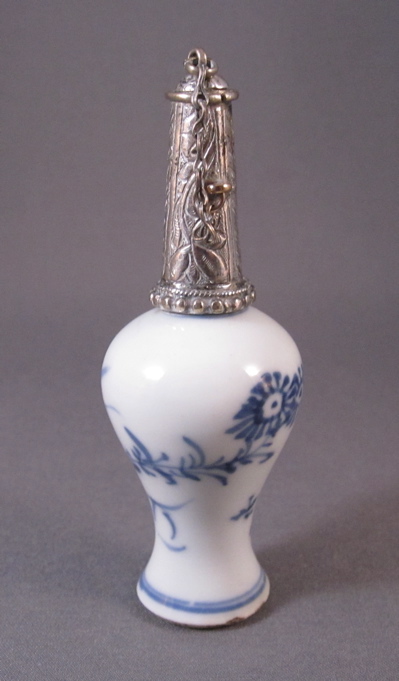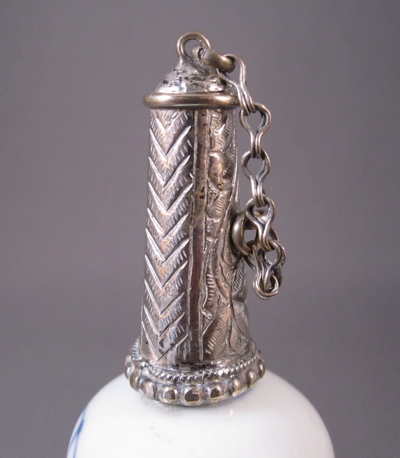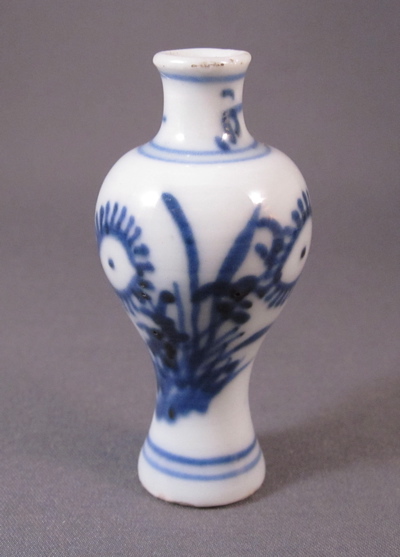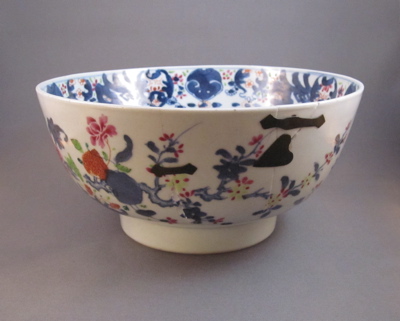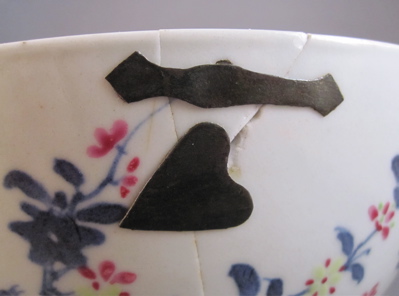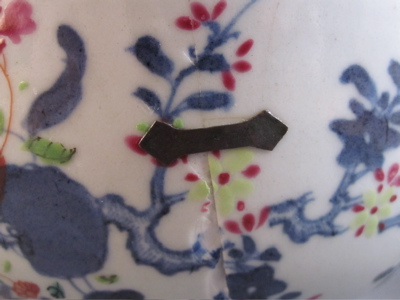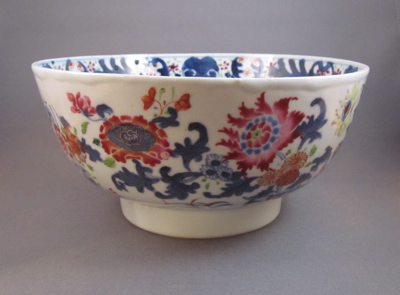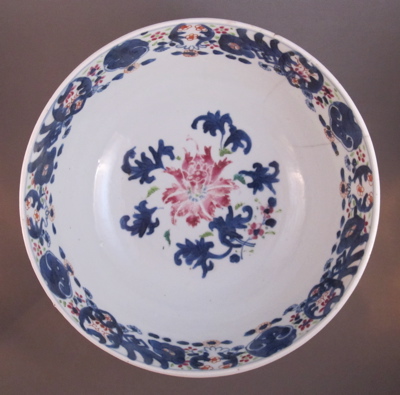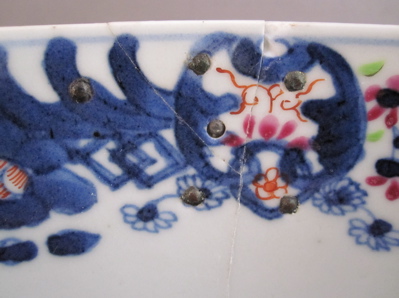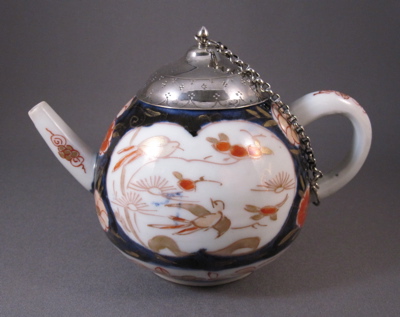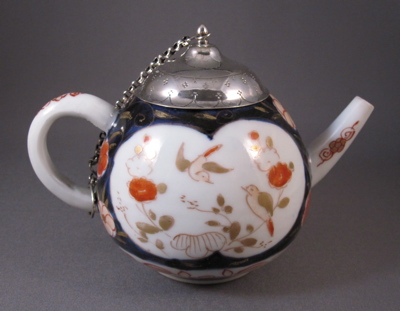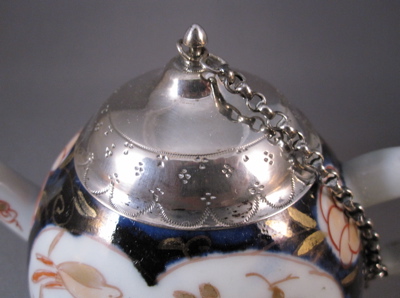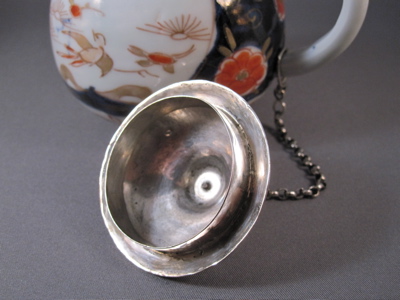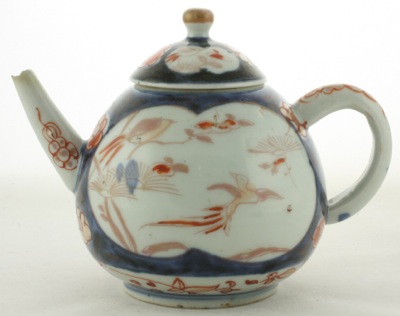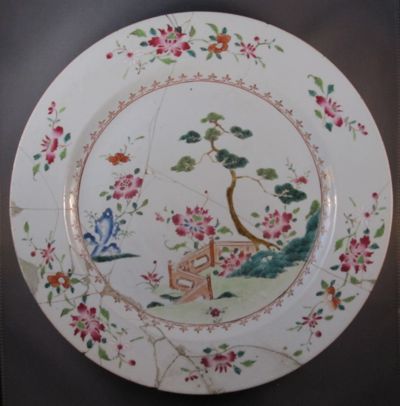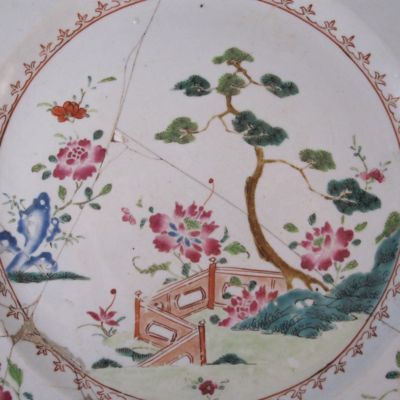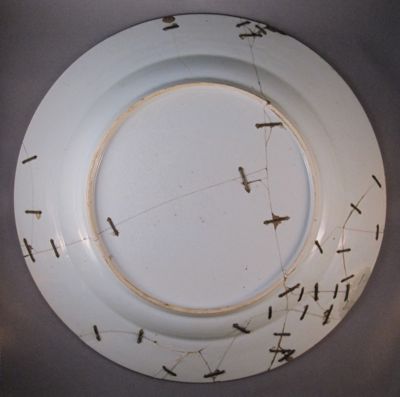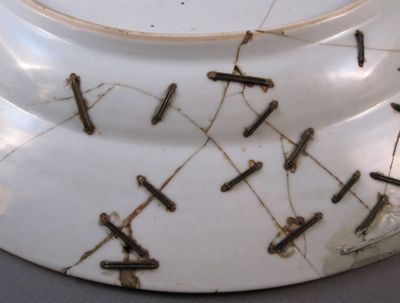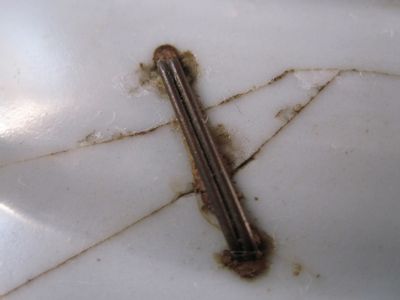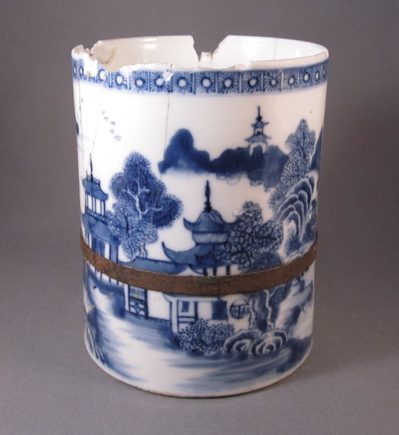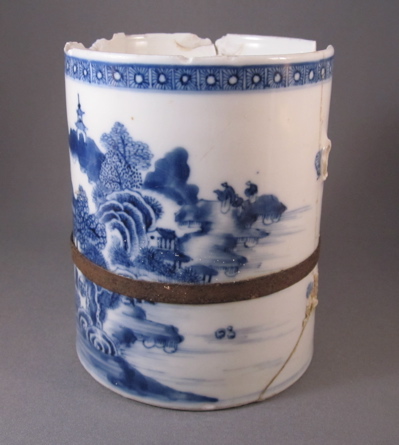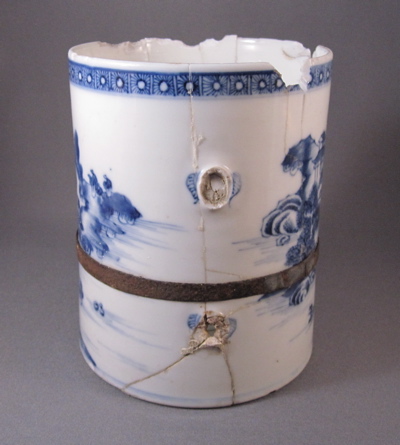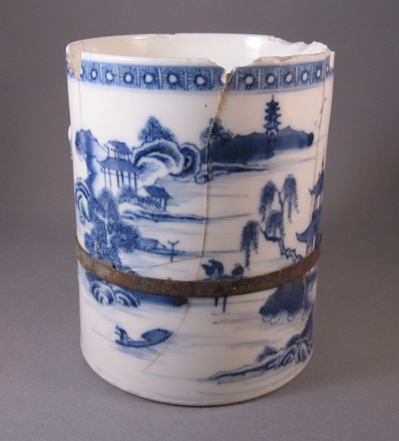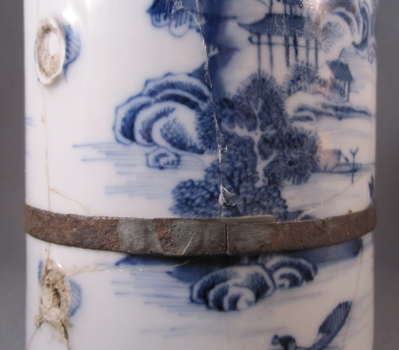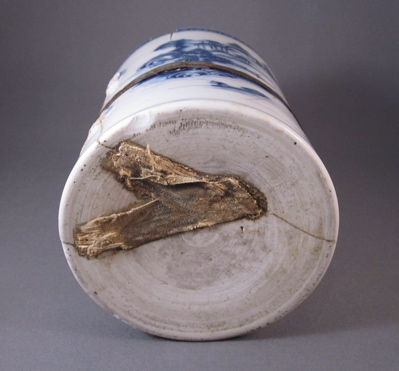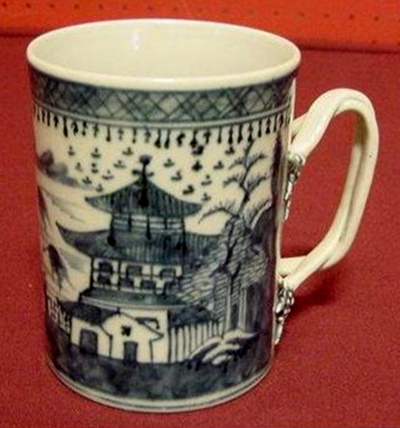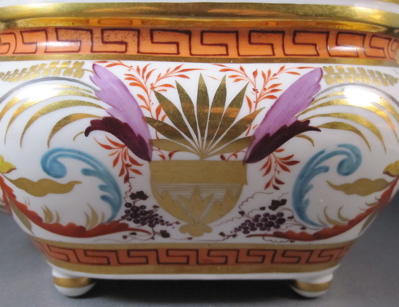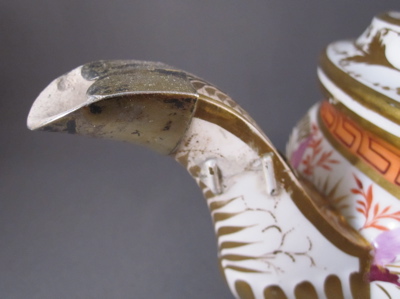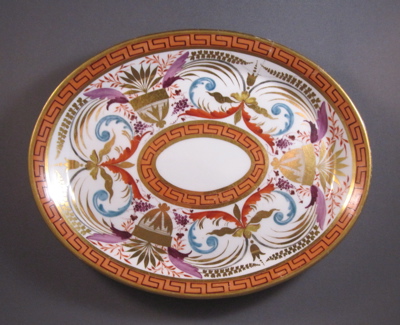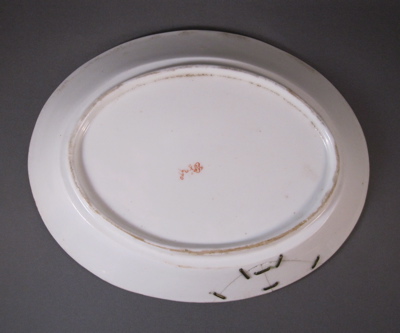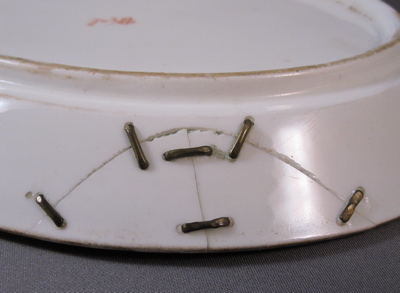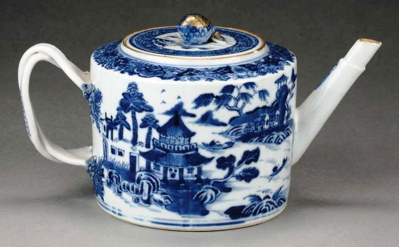London shape porcelain cabinet cup, made by Coalport in the early to mid 1800s. The Coalport factory was founded by John Rose in 1795 in Shropshire, a county in the West Midlands region of England. This example is superbly painted with angry looking birds & insects in panels surrounded by ornate gilt scrollwork and a cobalt blue ground. Measures 2-1/2″ high. Delicately formed bronze handle replaces the long lost broken original which had the same simple loop shape.
Posts Tagged ‘porcelain’
Shelley Art Deco cup & saucer, c.1930
Saturday, February 25th, 2012“Vogue” shaped porcelain teacup in the bright yellow Sunray pattern 11742, designed by Eric Slater for Shelley and introduced in August 1930. Discontinued in 1933, due to impractically designed hard to hold cup handle.
Teacup has footed conical form and measures 2-1/2′ high and the saucer is 4″ in diameter.
Stamped in green on the bottom: Shelley; ENGLAND; Rd 756533 with pattern number 11742-4.
A close up of one of the metal staples which was drilled through the outside of the delicate cup, holding the 2 broken pieces together.
The inside of the teacup reveals the ends of the staples flanking the crack.
This “perfect” example can be seen in the ceramics collection at the V&A Museum in London.
Heart-shaped metal brace on Chinese bowl, c.1770
Thursday, December 1st, 2011I have never seen another repair quite like this. The porcelain bowl itself is fine but unremarkable: made in China in the mid-1700’s for export to North America and Europe, decorated in Famille Rose enamels with large stylized flowers and cobalt blue underglaze leaves.
But what makes this piece truly remarkable are the figural repairs. Rather than using standard metal staples or straps to join the broken pieces of the bowl, an inspired metalsmith cut three different shapes to form a unique bond. An unmistakeable heart-shaped brace sits below a strap shaped like a scepter. Each of these has short metal pins attached, which pass through small holes drilled into the side of the bowl.
This short metal strap, straddling a crack, resembles a bow tie.
Bowl measures 4″ high and has a diameter of 8-1/4″.
A single red blossom surrounded by spidery blue leaves is found at the center of the bowl and a decorative border is painted along the inner rim.
The inside of the bowl reveals the carefully hammered ends of the metal brace pins, which are mostly masked by the deep cobalt painted decoration.
Chinese charger with 35 staples, c.1730
Friday, September 9th, 2011This large porcelain charger, made in China during the Yongzheng period (1723-35), measures 13-3/4″ in diameter. The famille-rose palette with predominantly pink colored enamel is made from colloidal gold, a suspension of gold particles mixed into the glaze.
The polychrome decoration of a large tree on a terrace with over-scaled flowers is painted in shades of green, pink and blue on a pale green ground.
After this charger was dropped and broke in to over 20 pieces of varying sizes, an itinerant china mender made it whole again by carefully drilling holes in to the underside of the porcelain and securing 35 metal staples to either side of the cracks.
The disarray of cracks and staples make a wonderful pattern of their own.
These unusual metal staples have a deep ridge running through each length.
